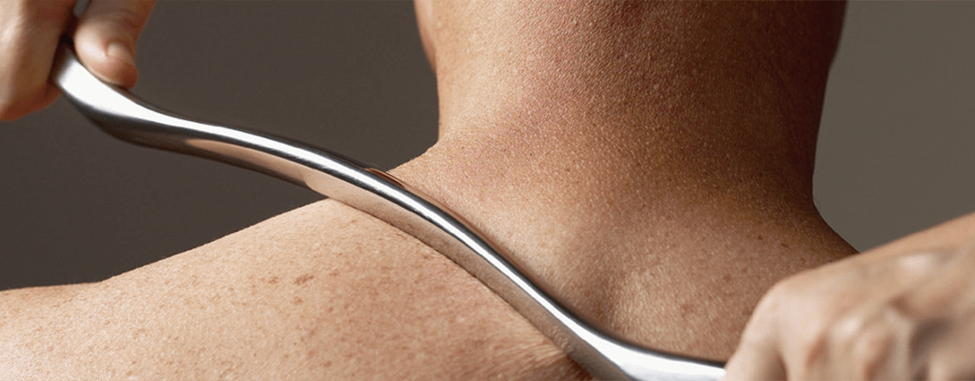Graston Technique is a form of Instrument Assisted Soft Tissue Mobilization or better known as IASTM. It is the utilization of instruments to achieve similar effects and benefits of traditional soft tissue mobilization techniques. Clinicians will use such instruments in a forceful passive movement to manipulate the underlying musculofascial elements through any restrictive direction(s) by starting superficial and progressing to deeper layers.

Effects of Soft Tissue Mobilization
· Release Fascial Restrictions
· Stretches Connective Tissue and Muscle Fibers
· Increases Skin Temperature
· Increase Rate and Amount of Blood Flow
These effects will not only assist in improving overall soft tissue and joint mobility but will help enhance athletic performance as well. Our muscle function depends on our fascial system. Over 30% percent of our muscular force is generated by the surrounding fascia. The forces produced by our muscles are transmitted through the surrounding connective tissue due to the fact many muscle fibers fail to run the entire distance from one attachment point to the other in our body and function primarily in the middle of the muscle belly. Therefore, muscular strength can be improved by applying Graston Technique to impacted muscles to restore motion in the surrounding tissue and muscles by allowing for normal forces during muscular contractions to occur.
Why use IASTM
Graston Technique instruments help clinicians detect the tactile feel of soft tissue restrictions to the hands. The tactile feel is amplified through the instrument and increases patient involvement. Patients may also feel the vibrations through the instruments when abnormal tissue texture is detected which will facilitate patient involvement throughout their plan of care.
-David Gross, PT, DPT, CSCS

Comments
Thanks for sharing such a good idea, piece of writing is nice, thats why i have read it entirely
By Krace